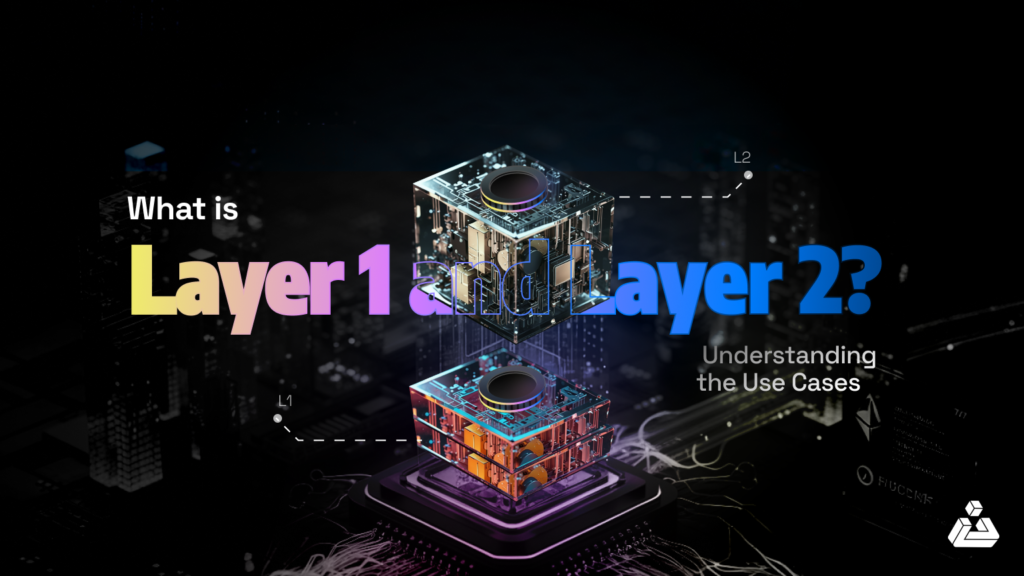Blockchain Operating Systems are capitalizing on trend momentum, and are making the possibility of replacing traditional operating systems that run on centralized processors a reality in near future. While the concept might seem abstract at first glance, as blockchain becomes more integrated towards infrastructure, well-known operating systems like Windows, and Linux could face competition from blockchain ecosystems such as NEAR, COSMOS, PolkaDot, and Dimension. Let’s quickly delve into what Blockchain Operating Systems (BOS) are, and how they differ from conventional Operating Systems, the current landscape of Blockchain platforms in the market, and their potential for widespread adoption.
What are Blockchain Operating Systems (BOS)?
Blockchain Operating Systems are decentralized platforms designed to run and manage applications, much like traditional operating systems (OS) do for computers. However, unlike traditional OS, BOS operates on a decentralized network of nodes, leveraging blockchain ledger technology to ensure security, user anonymity, and immutability. These systems facilitate the deployment, execution, and management of decentralized applications (dApps), providing an environment that supports smart contracts, consensus mechanisms, and other blockchain functionalities such as decentralized finance (DeFi) core OS. There is potential for increased data security and privacy compared to traditional operating systems.
What really sets BOS apart from traditional OS?
-
Architecture
The fundamental architectural difference lies in traditional OS relying on centralized processing with a single kernel managing all essential system resources such as memory and hardware-software interactions, whereas blockchain-based OS operates on a decentralized architecture with a consensus mechanism, where tasks are authenticated and recorded across distributed ledgers. The kernel in BOS serves a similar foundational role to that in traditional OS but it is designed to function within a decentralized network interacting with the consensus mechanism. The consensus mechanism acts as a driving force to manage and validate operations across the decentralized network.
-
Utilities and Purposes
While the general purpose of an OS is to manage hardware resources, provide a user interface and support a wide range of applications. Windows is versatile for personal, professional, and enterprise use, offering utilities like word processing and multimedia tools. Linux has different versions, such as Ubuntu for end users and Kali for security testing and facilitating hackers.BOS intends to provide a platform for decentralized applications (dApps), smart contracts, and other blockchain functionalities.
-
Security
Traditional OS relies on security measures implemented at the OS level (e.g., antivirus, firewalls). BOS is inherently secure through cryptographic algorithms and consensus mechanisms that make tampering difficult.
-
Data management: Availability and Consistency vs Liveness and Safety
In traditional Distributed Systems, Availability ensures that the systems continue to operate and respond to requests even if some node fails. It means that every request receives a response, whether the request is successful or fails.
Consistency ensures that all nodes in the system have the same data at the same time. It means that every read receives the most recent write. In regards to Data management, A comparison below can help build an understanding of this concept is applied in BOS.

A Comparison with Classical example: CAP Theorem in a 3-Node System.
In a 3-node system:
- Availability: If one node goes down, the other two can still respond to requests.
- Consistency: Ensures that updates to data are reflected across all nodes, maintaining uniform data across the system.
In Blockchain OS, Concepts of Liveness (Availability) and Safety (Consistency) is implemented.
- Liveness: Ensures the system continues to make progress, processing and including new transactions without getting stuck. For example, Proof of Work (PoW) in Bitcoin incentivizes miners to add new blocks, while Proof of Stake (PoS) in Ethereum 2.0 requires validators to propose and attest to new blocks.
- Safety (Finality): Ensures that once a transaction is included in the blockchain, it cannot be reversed or altered, maintaining immutability and security. PoW achieves this through computational difficulty, and PoS penalizes malicious validators to ensure the integrity of finalized blocks.
Blockchain Ecosystems as Operating Systems
Ecosystems such as NEAR. COSMOS, PolkaDot, and Dimension are leading the concept of BOS to be more tangible. Unlike Ethereum, which has limitations i.e not being modular, interoperable, and having limited scalability that hinder it from being a full-fledged BOS, these newer systems offer features that make them appropriate for operating as a decentralized OS.
NEAR Protocol: Scalable and user-friendly blockchain platform.
Features:
- Scalability: Sharding for high transaction throughput.
- Developer-Friendly: Tools for easy dApp development.
- Low Costs: Optimized for minimal transaction fees.
COSMOS: Aims to create an Internet of Blockchains & Interoperable blockchain ecosystem.
Features:
- Interoperability: Inter-blockchain communication (IBC) for cross-chain communication
- Scalability: Modular architecture supporting multiple blockchains.
- Flexibility: Cosmos SDK for customizable blockchain solutions.
Polkadot: Multi-chain interoperability and security.
Features:
- Interoperability: Connects and secures multiple blockchains.
- Scalability: Parachains and relay chain for parallel transaction processing.
- Security: Shared security model (parallel processing) for connected blockchains.
Dimension: Modular and scalable blockchain OS.
Features:
- Modularity: Integrates various components as needed.
- Scalability: Supports high transaction volumes.
- Interoperability: Facilitates cross-chain interactions
- Security: Advanced cryptographic techniques & modular architecture for privacy-centric applications.
Conclusion
These BOS platforms offer advanced features like scalability through sharding and parachains, interoperability via protocols like Cosmos’ IBC, and robust consensus mechanisms such as Tendermint and NPoS. Designed to support decentralized applications efficiently, BOS is set to redefine the digital landscape with its four key features: scalability, interoperability, consensus mechanisms, and rollups (a layer 2 solution to improve scalability, throughput, efficiency, and reduce costs), making them strong contenders for the future backbone of the decentralized web.
If you’re curious about how Blockchain Operating Systems could fit into your tech roadmap or want to experiment with building on one of these platforms, this might be the perfect time to start exploring. Take the first step—dive into the details, experiment, and envision what’s possible in a decentralized future.
Ready to explore the possibilities? Connect with our team and start your journey toward leveraging Blockchain Operating Systems for your business or project.
Read More:
What are Smart Contract Wallets?
Custodial vs Non-Custodial Wallets































